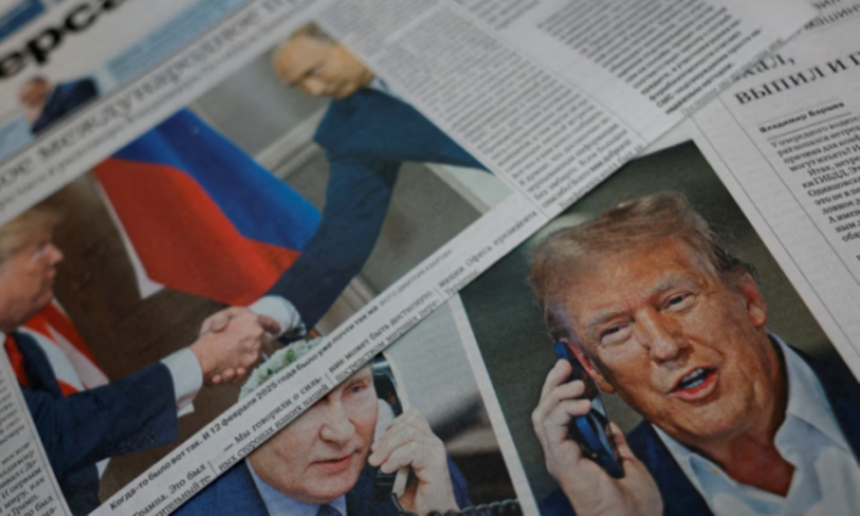As Russia’s full-scale war in Ukraine enters its third year, former U.S. President Donald Trump has been pushing for a peaceful resolution. Various policy organizations have recently proposed different approaches to securing a lasting peace in Ukraine.
The Maximum Pressure Strategy
A report by the Center for European Policy Analysis (CEPA), titled “How to Win: A Seven-Point Plan for Sustainable Peace in Ukraine,” advocates for a strategy of maximum pressure to bring Russia to the negotiating table.
The plan calls for the U.S. and its allies to:
- Provide unconditional and immediate material support to Ukraine to weaken the Russian military and improve Ukraine’s negotiating position.
- Increase sanctions on Russian financial institutions and the energy sector, utilize frozen Russian assets to support Ukraine’s defense and reconstruction, and impose secondary sanctions on authoritarian allies of Russia, including China, Iran, and North Korea.
- Ensure that both Ukraine and Europe participate in peace talks with Russia, while supporting a European-led coalition to enforce a ceasefire line with an international peacekeeping force.
- Accelerate Ukraine’s EU accession process.
One of the report’s authors, Catherine Sendak, stressed that the U.S. should enter negotiations only after equipping Ukraine with the strongest possible military capabilities and applying its most stringent diplomatic measures. She also argued that Ukraine’s NATO membership should not be a subject of talks with Russia, as it would effectively give Moscow a veto over NATO expansion.
Negotiation Tactics
Josh Rudolph, a researcher at the German Marshall Fund and former policy adviser on Russia and Ukraine at the National Security Council, outlined recommendations for how the U.S. could navigate negotiations under a potential Trump administration.
Key recommendations include:
- Engage Putin from a position of strength: Russia’s failed invasion has left Putin weakened, and the U.S. should dictate the terms of negotiations.
- Be prepared to walk away: If Putin refuses to make major concessions, the U.S. should be ready to abandon talks.
- Combine sanctions with lower oil and gas prices: Trump’s relationship with Saudi Arabia could be leveraged to flood the fossil fuel market, further straining Russia’s war economy.
Rudolph also advocated for fully arming Ukraine, allocating all $300 billion of frozen Russian assets for Ukraine, pressuring Europe to increase defense spending, and inviting Ukraine into NATO if Putin refuses reasonable peace terms.
Economic Interests in Ukraine’s Victory
A report by the American Enterprise Institute (AEI) highlighted the economic and security risks of withdrawing support from Ukraine. The study argued that a Russian victory would embolden authoritarian regimes in Iran, China, and North Korea while forcing the U.S. to increase its military presence in Europe.
Key findings:
- Supporting Ukraine’s victory is in America’s best interest.
- A Russian-dominated world would be more dangerous and costly for the U.S., requiring an estimated $808 billion in additional defense spending over five years.
- A stronger, post-war Ukraine could serve as a key stabilizing force in Europe.
Frederick Kagan, one of the authors, warned that a Russian takeover of Ukraine would trigger a massive refugee crisis, destabilizing Europe while allowing Moscow to replenish its military with Ukrainian resources.
A Middle-Ground Approach
The Project 2025 Presidential Transition by the Heritage Foundation suggests a middle-ground approach, reflecting divisions within the U.S. conservative movement on Ukraine.
Key recommendations:
- Continued U.S. involvement should be fully funded and limited to military aid, while Europe should handle Ukraine’s economic needs.
- Any long-term U.S. strategy should be clearly defined and avoid risking American lives.
- While acknowledging that Putin’s invasion was unjust, the focus should be on containing Russia and strengthening NATO unity.
With multiple approaches on the table, the path to peace in Ukraine remains uncertain, but Western policymakers continue to debate strategies that balance military support, economic pressure, and diplomatic engagement.







